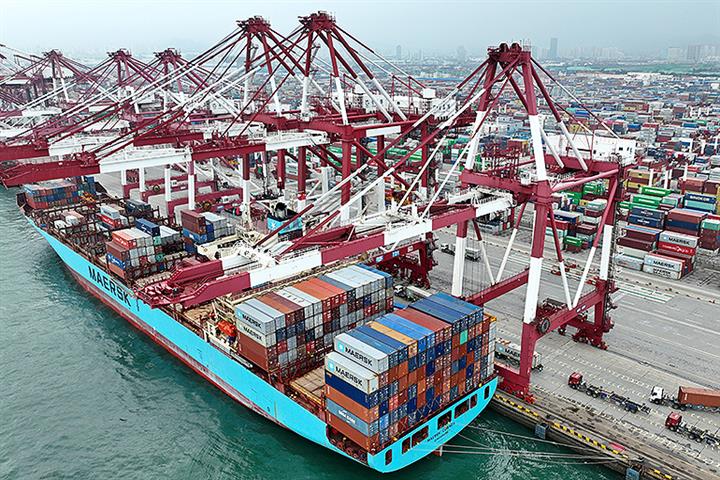 China’s Foreign Trade Dips in August, But Export Markets Diversify
China’s Foreign Trade Dips in August, But Export Markets Diversify(Yicai Global) Sept. 8 -- The value of China’s international trade fell 2.5 percent in August from the month before as global demand contracts, but the proportion of emerging markets that are trading more with China is on the increase.
Imports and exports totaled USD550.4 billion in August, data from the General Administration of Customs showed yesterday. It is a 4.1 percent improvement from a year earlier. Exports climbed 7.1 percent year on year to USD314.9 billion while imports edged up 0.3 percent to USD235.5 billion.
China’s trade surplus, though, narrowed 21 percent in August from July to USD79.3 billion, according to customs’ data. This is much less than the USD90.7 billion forecast by a Yicai Global poll of chief economists. But it was a 34.1 percent increase from a year earlier.
Although the growth of China’s foreign trade fell in August, it remained within a reasonable range, Huo Jianguo, vice president of the China Institute for World Trade Organization Studies, told Yicai Global.
There are still obstacles in the overall foreign trade environment, such as the downturn of the European and American economies as well as fluctuations in the industrial and value chains, Huo said.
The JPMorgan Global Manufacturing Purchasing Managers’ Index slid 0.8 percentage point in August from July to 50.3, Zheng Houcheng, director of the Yingda Securities Research Institute, told Yicai Global. A mark above 50 indicates expansion.
The new orders subindex, though, dropped 0.7 percentage point to 48.3 and has been in contraction territory for two straight months now indicating that global demand is shrinking, Zheng said. The base also rose 6.2 percentage points from a year earlier, affecting August data.
Although the Chinese yuan has depreciated in recent months, which will be a boost to exports, it will affect companies that need to import raw materials for their businesses, he added.
But China’s export market is becoming more diverse. In the first eight months, China’s top three trading partners were the Association of Southeast Asian Nations, the EU and the US, accounting for 15 percent, 13.7 percent and 12.3 percent of foreign trade, respectively, according to customs’ data.
Trade among ASEAN members increased by 0.5 percentage point from the same time last year. And South Korea has now replaced Japan as China’s fourth largest trading partner, accounting for 5.9 percent of all trade. The value of China-South Korea trade climbed 7.8 percent in the eight months ended Aug. 31 from a year earlier to CNY1.6 trillion (USD230 billion).
Editor: Kim Taylor